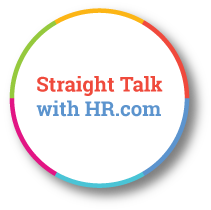“AI Is Most Effective When It Enhances Rather Than Replaces Human Element”
Exclusive interview with Jesse Harriott, Head of Analytics & Executive Director, Workhuman iQ
Posted on 12-03-2024, Read Time: 6 Min
Share:


 |
“Using new data analytics capabilities to monitor employee keystrokes and the like is a disservice to both employees and the potential that new technology has to transform the pace at which consequential work is achieved,” said Jesse Harriott, Head of Analytics & Executive Director, at Workhuman iQ. |
In an exclusive interview with HR.com, Harriott discusses the pros and cons of emerging technologies like AI and automation in HR, the importance of data privacy and cybersecurity, and how organizations can effectively balance data-driven practices with trust and employee well-being.
Excerpts from the interview:
Q: What are the pros and cons of emerging technologies, such as artificial intelligence (AI) and other automation and tracking technologies, that provide human resources (HR) data?
Harriott: As always, with any new technological advancements, there are going to be advantages and setbacks.One of the primary benefits of AI is the ability to provide leadership with a deeper understanding of their workforce through enhanced and in-the-moment people analytics. For example, a social recognition program uses data from employee feedback and recognition moments to offer valuable insights on key skills present in the organization, employees who might be feeling disengaged, and star performers who have high potential. These types of analytics will help leaders make data-informed business and employee-centered decisions.
Another key benefit is increased efficiency: AI can automate routine tasks and free up time for organizations to focus on human-centered priorities, thus enhancing inclusivity. Integrating AI into the workplace is most effective when it enhances rather than replaces the human element.
However, there are some drawbacks that come into play; one challenge is that organizations struggle to keep up with the rapid pace of technological change. This requires ongoing upskilling to ensure that teams can effectively use and interpret the data garnered from these technologies.
Additionally, as these technologies become more complex, data privacy becomes a challenge for many organizations. With more data being collected, stored, and analyzed by AI systems and other automation tools, organizations must ensure that sensitive information is properly protected, and that employees' privacy rights are respected.
Q: How can organizations effectively address the fast-evolving technological challenges related to data privacy and cybersecurity?
Harriott: Companies can address the fast-evolving technological challenges related to data privacy and cybersecurity by upskilling their workforce to understand the risks associated with cybersecurity.Regular training and awareness programs will ensure that all employees are aware of their role in protecting the organization’s privacy. Additionally, it is important to incorporate cybersecurity into an organization’s culture to ensure everyone feels responsible for ensuring the safety of information.
Leadership should promote this culture through regular communication and by setting an example of what cybersecurity safety looks like. By demonstrating commitment to data protection, leadership helps establish cybersecurity as a priority across the organization. It is also helpful to integrate a cybersecurity or safety awareness award into an organization-wide recognition program.
This enables leaders and individual contributors alike to award their colleagues for behaviors that contribute to the safety of the organization. What gets recognized, gets repeated—both by the person receiving that recognition as well as the individuals who see that habit being recognized.
Q: How can organizations strike the right balance between data privacy and effective employee scheduling and management practices?
Harriott: In an increasingly data-driven world, organizations must find the right balance between leveraging employee data and safeguarding it.As the use of data grows, organizations have the ability to look at outputs more in-depth. The time employees spend sitting at their desks or “active” on Slack has never and will never be a good indicator of productivity. That is simply not a reflection of how work gets done and is especially not an indicator of the quality of work that gets done.
Prioritizing a culture of trust and psychological safety is the hallmark of a good company culture—and trust goes both ways. If you want employees to do their best work and feel that security, you first need to establish that you trust them to get their work done. Using new data analytics capabilities to monitor employee keystrokes and the like is a disservice to both employees and the potential that new technology has to transform the pace at which consequential work is achieved.
By prioritizing both responsible data management and employee autonomy, organizations can create an environment that drives performance without compromising on privacy or employee well-being. Leaders should empower their teams with the tools to evaluate the impact of their work so they can strategize what behaviors contribute to business goals, and what behaviors do not.
HR leaders can also build out more authentic and validated data sets through the use of employee recognition programs to create an authentic and in-the-moment data set of employee behaviors and performance. These recognition moments create a veritable map of the organization through thousands of data points, empowering leaders to ask big questions like where silos are, how information flows through the organization, what skill sets are available, and so much more.
Error: No such template "/CustomCode/topleader/category"!
